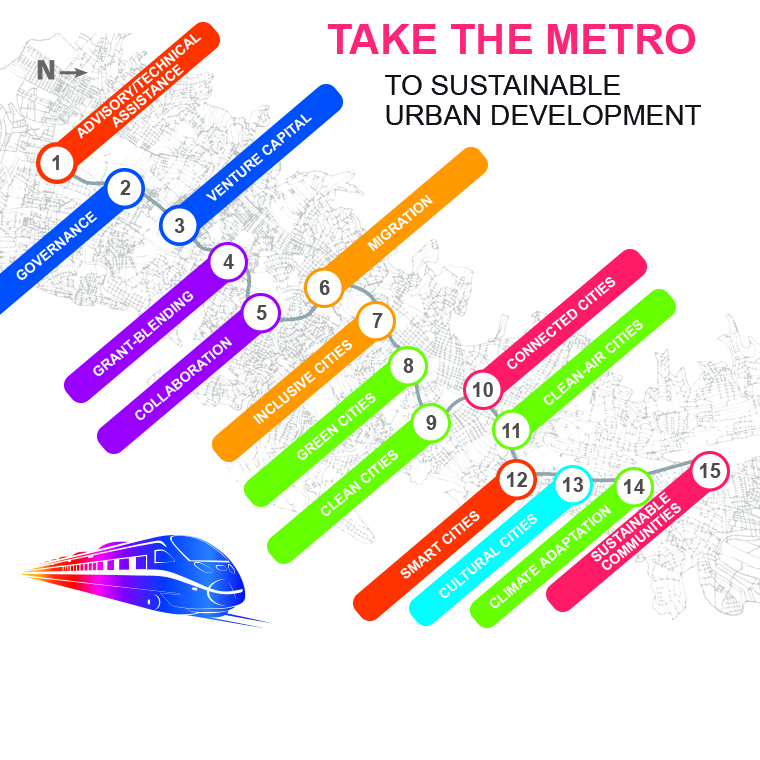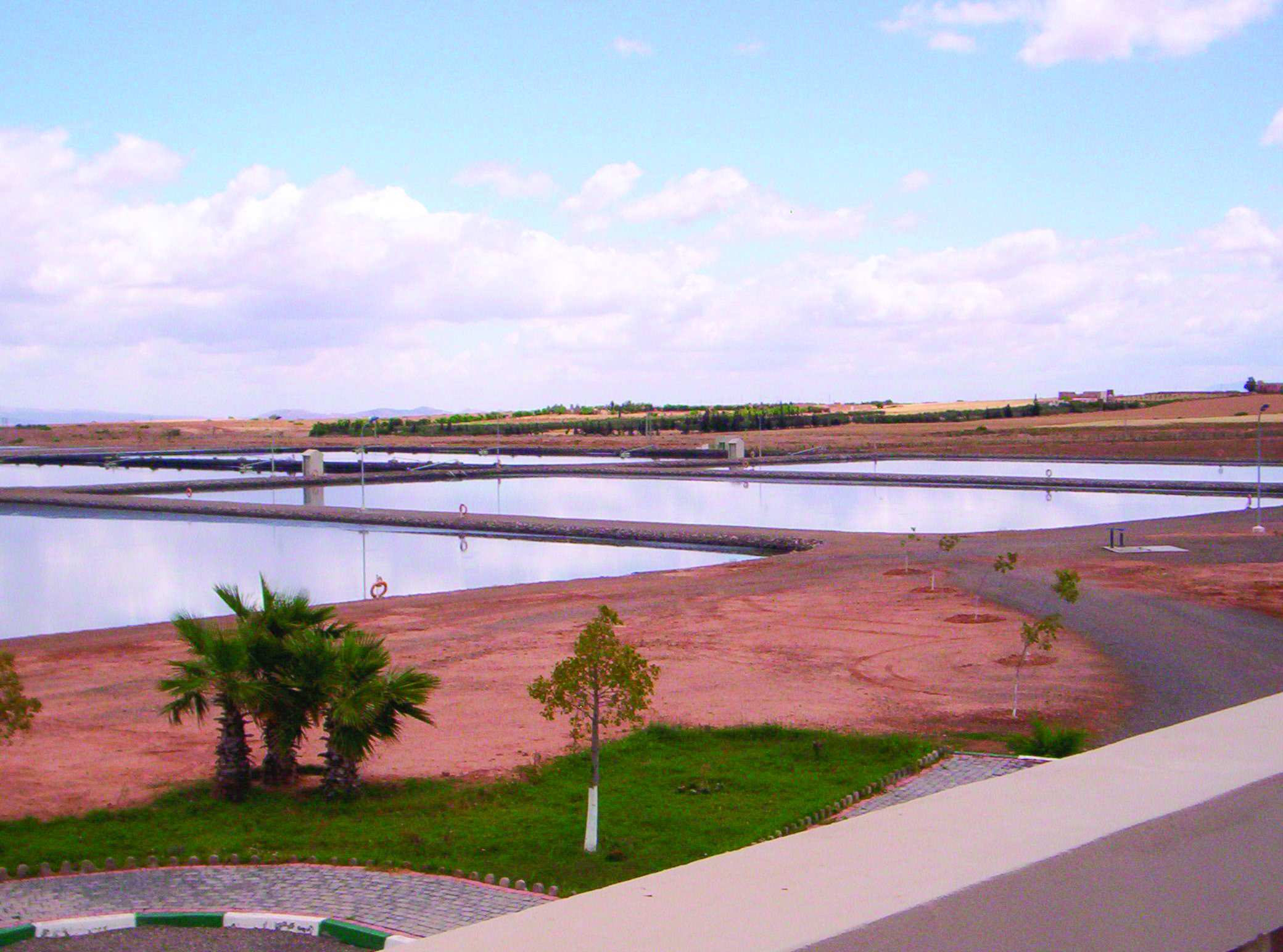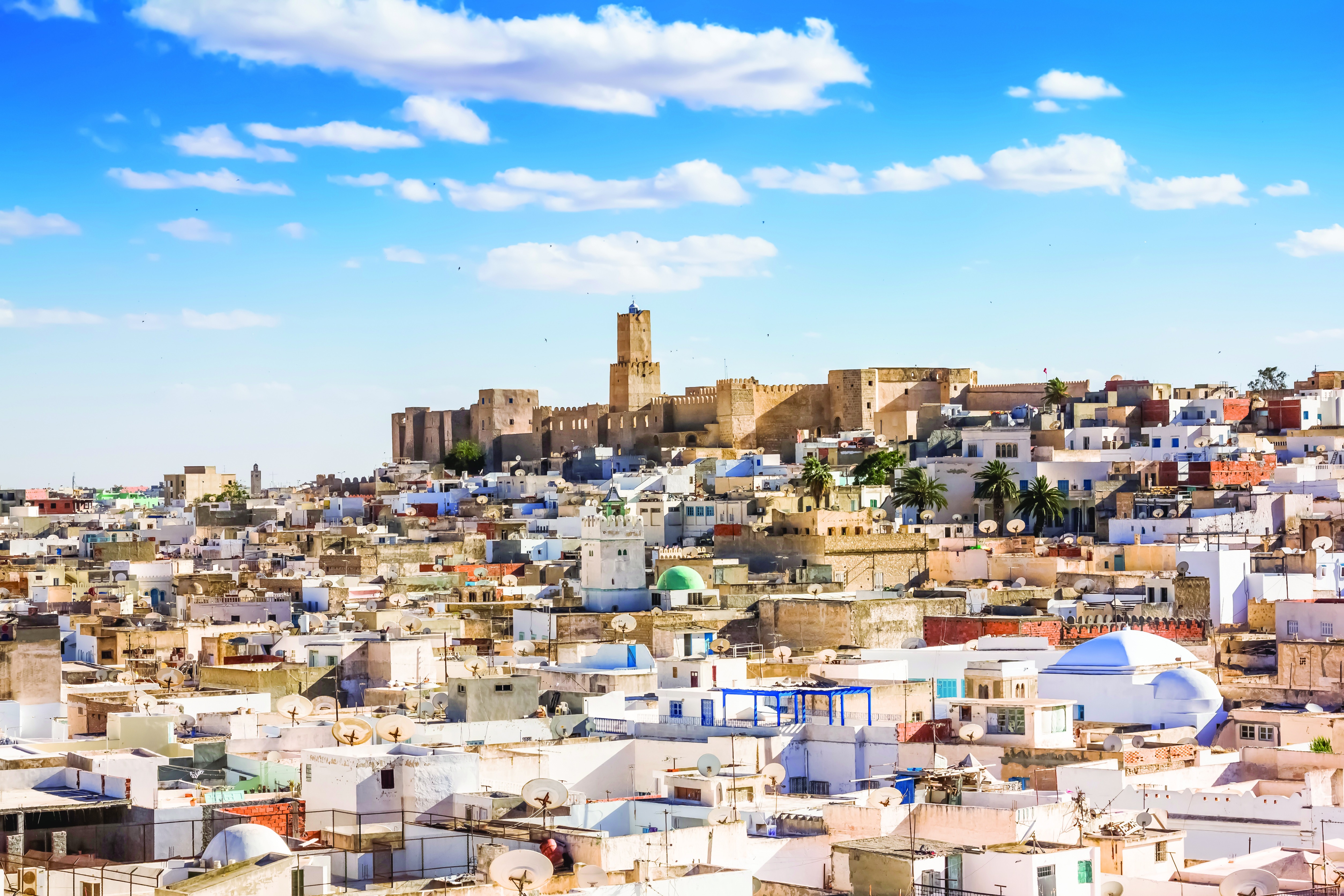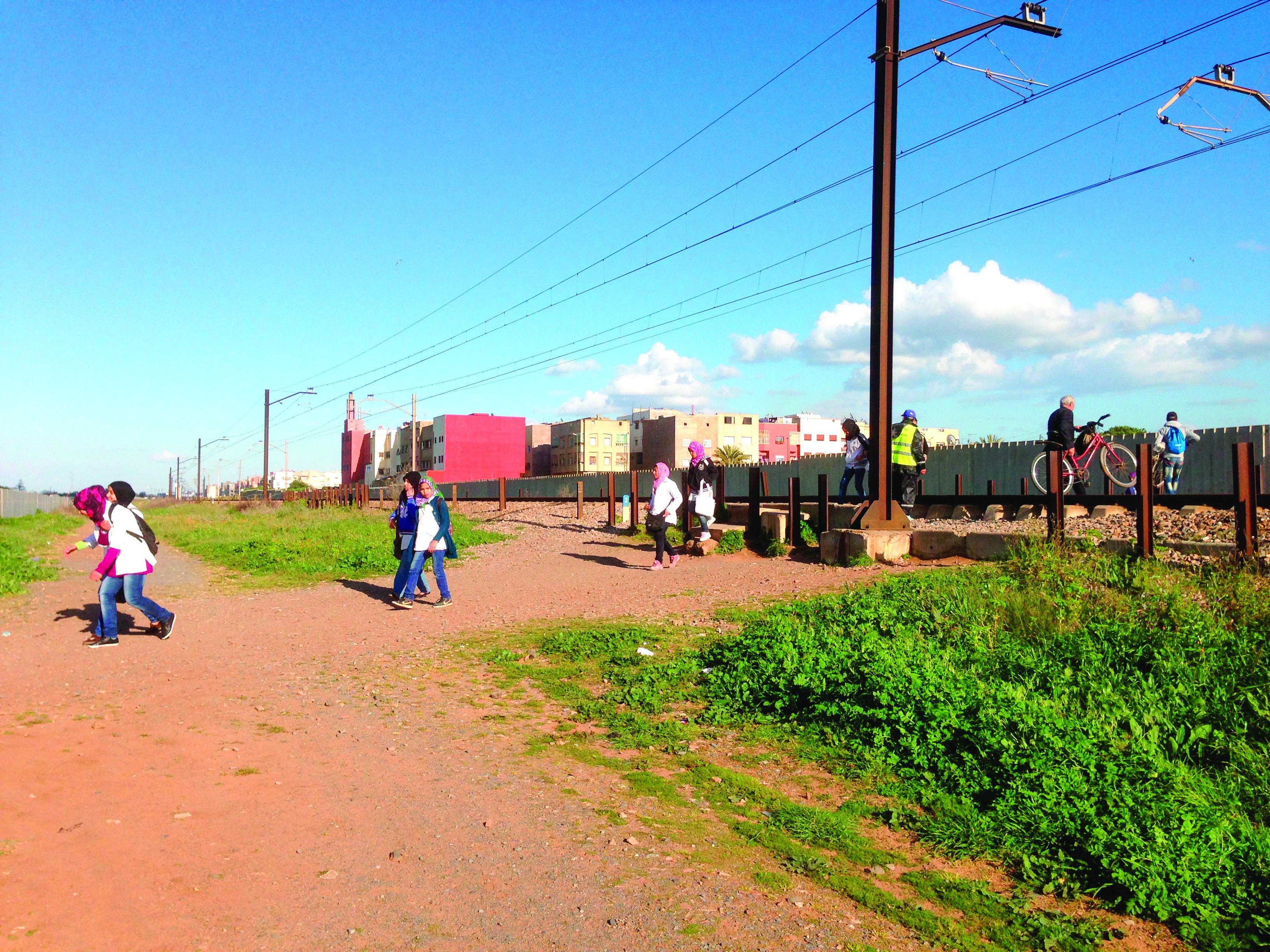The EIB is the EU bank. But it finances urban development outside the EU too, like the Quito Metro. Follow the map of the line under construction in Ecuador’s capital, where the UN conference on urban development takes place this month, to learn about projects the EIB took from the earliest stages through to implementation.

Habitat is the UN Conference on Housing and Sustainable Urban Development which, since 1976, is held only once every 20 years. Habitat III takes place from 17-20 October, 2016 in Quito, Ecuador. Since the EIB is financing the Metro that will help transform Quito, we prepared a map to show the scope of the Bank's work on sustainable urban development around the world. You can see the interactive map or read about the project in more depth in this post.
Advisory/technical assistance
The Mediterranean Hotspots Investment Programme aims to reduce or prevent pollution and improve water resources management in North Africa and the Middle East. It identifies, screens and frames potential projects and already set in motion preparation of projects potentially worth EUR 1bn in investments. It aims for more by 2018—projects like the proposed upgrade and extension of the wastewater system in Saida, a Lebanese city with a rising population due to the influx of Syrian refugees.
Governance
EIB technical assistance supports a new urban district in Taparura, part of Tunisia’s second city, Sfax, on a site decontaminated with EIB financing. The advice, in part, aims to transform the company tasked by the Tunisian government with carrying out the development into a mixed public-private enterprise with clear governance, modern statutes, and a well-defined relationship with the government, the municipality and private developers. This will be key to attracting private capital and creating a sustainable urban space that’s integrated into the city.

- The Quito Metro under construction
Venture capital
Many of Africa’s most talented entrepreneurs leave for Europe or the US. Boost Africa is a new programme—funded by the EIB with the European Commission and the African Development Bank—to counter the brain drain. It helps venture capitalists, whose role is key to innovation and job creation in African cities, move from an original idea through development, scaling up, and eventual exit. The EUR 150m investment programme is complemented by EUR 20mn in technical assistance and advisory services.
Grant blending
Lake Victoria is one of Africa’s most important natural resources. The water and sanitation facilities in three lakeside Tanzanian cities are being upgraded and extended with loans from the EIB and Agence Francaise de Développement, plus a contribution from the Tanzanian government. The project also gets grants to subsidise interest rates and provide technical assistance from the EIB-administered EU-Africa Infrastructure Trust Fund, which blends grants from the European Commission and EU Member States with long-term loans to foster sustainable growth and protect against poverty.
Collaboration
The EIB collaborates with the EU’s Neighbourhood Investment Facility to provide technical assistance and investment grants to municipal infrastructure programmes in the Mediterranean and Eastern Europe, for example in Ukraine. The Municipal Project Support Facility focuses on climate-change mitigation, in particular in energy efficiency, district heating projects, street lighting, waste and water, and transport projects that cut greenhouse gas emissions.
Migration
Jordan’s water shortage is severe. The arrival of refugees from across the Syrian border makes it worse. The Wadi al-Arab project will bring 30 million cubic metres of water annually from the Sea of Galilee-fed King Abdullah Canal to the northern city of Irbid, not far from the Syrian border. The USD 54m EIB investment is about half the total cost of the project, which includes a treatment plant, a 26 km transmission pipeline, and pumping facilities.

- Construction of the Quito Metro
Inclusive cities
Informal settlements lacking essential services sprang up around Tunisian cities due to rapid population growth and urbanisation. The EIB has committed EUR 70m to improve the living conditions of more than 119 settlements (alongside EUR 88m from the government). Improvements range from wastewater treatment and sanitation through to roads, walkways, playing fields, community centres, and energy efficiency. Technical assistance brings new environmental and social approaches to Tunisia, including a focus on public participation in project selection.

- The lagoon treatment system at Oujda
Green cities
In Oujda, Morocco, a lagoon treatment system prepares urban wastewater for re-use in agriculture. Water infrastructure has not kept pace as Oujda developed into a city of 450,000. The lagoon system stops the discharge of raw wastewater that used to find its way into drinking water in nearby Algeria. Lagoon systems are energy efficient and treatment has a low cost compared to standard wastewater processes.
Clean cities
About 40 per cent of Panama City’s population lacked access to the sewerage system before the Panama City and Bay Sanitation Programme. Gutters in the old town were frequently blocked and filled with human waste. Untreated wastewater was held in septic tanks, polluting the groundwater before its release into the bay. The EIB provided two loans since the project’s inception in 2007.
Connected cities
Quito’s first Metro line will be the linchpin of an integrated public transport system, connecting the city north to south in 34 minutes and reducing CO2 emissions. In its first year, the Metro is expected to serve 124 million passengers, 85% of them captive public transport users. Backed by EUR 200m from the EIB, the project will foster economic development through improved public transport and accessibility, as well as creating 1800 jobs during construction and 1000 during operation.
Clean-air cities
Swift urban population growth can cause mobility problems and hit quality of life by restricting access to public services. It is also a safety risk due to overcrowding of existing infrastructure. In 2016, the EIB signed a EUR 450m loan to finance the first Metro line in Lucknow, one of India’s six most polluted cities. The Metro is the backbone of Lucknow’s Comprehensive Mobility Plan, which is expected to increase the share of public transport to 27% by 2030 from the current 10%.

- Work on the Quito Metro
Smart cities
Smart Cities and Sustainable Development is a collaboration between the EIB and Belgium’s Belfius Bank lending to Belgian towns and cities for sustainable mobility, energy efficiency and smart districts. The EIB has set up a research programme with a Spanish university to assess the application of Smart City projects in the Mediterranean region. The EIB aims to take the results forward to bankable projects through the Urban Projects Finance Initiative.
Cultural cities
Many of the old towns, or Medinas, of North Africa and the Middle East risk becoming either slums or tourist museums with little relevance to the life of the locals. The EIB’s Medinas 2030 initiative supports the economic and social rehabilitation of historic towns, to create jobs and build vibrant places to live with improved housing and infrastructure. The EIB is working with the Tunisian government and AFD to set up a national Medinas programme and to help implement the final projects.

Climate adaptation
In Saint Lucia, the poor condition of a major dam leaves the north of the Caribbean island at risk from landslides that cut off water. Further, during the dry season, water is rationed, threatening public health, shutting down schools and public institutions, and hampering tourism, the country’s main economic activity. Alongside the Caribbean Development Bank, the EIB’s planned project to make northern Saint Lucia climate resilient will be carried out concurrently with a similar one in the south, where the island’s port and airport are located.
Sustainable communities
North of Casablanca, the Zenata Urban Development Project brings together most EIB sustainable urban development priorities—urbanisation, migration, sustainability and climate change. With EUR 300m in loans from the EIB and AFD and a European Commission technical support and governance grant, Zenata will create Africa’s first Eco-City, housing 300,000 people (42,000 of them from nearby shanties) and providing 100,000 jobs. The design copes with harsh natural conditions by storing seasonal flood water in reservoirs to feed agriculture during dry periods. It channels wind flows to cool the city during the hottest months. Up to 30% of the land is reserved for public parks to moderate high temperatures and promote biodiversity.

- Children and families crossing a rail line. The kind of urban danger eliminated in the Zenata project.
